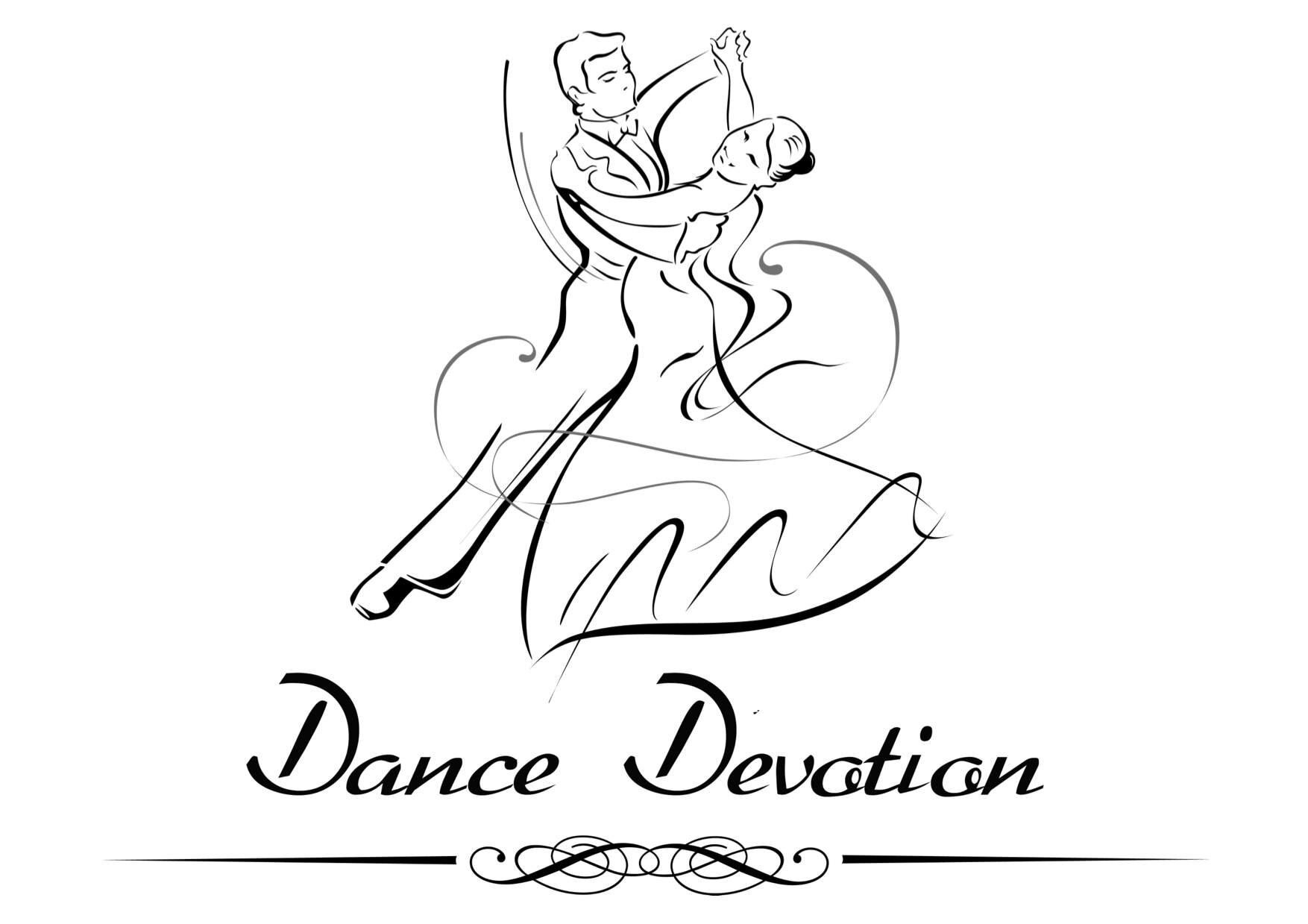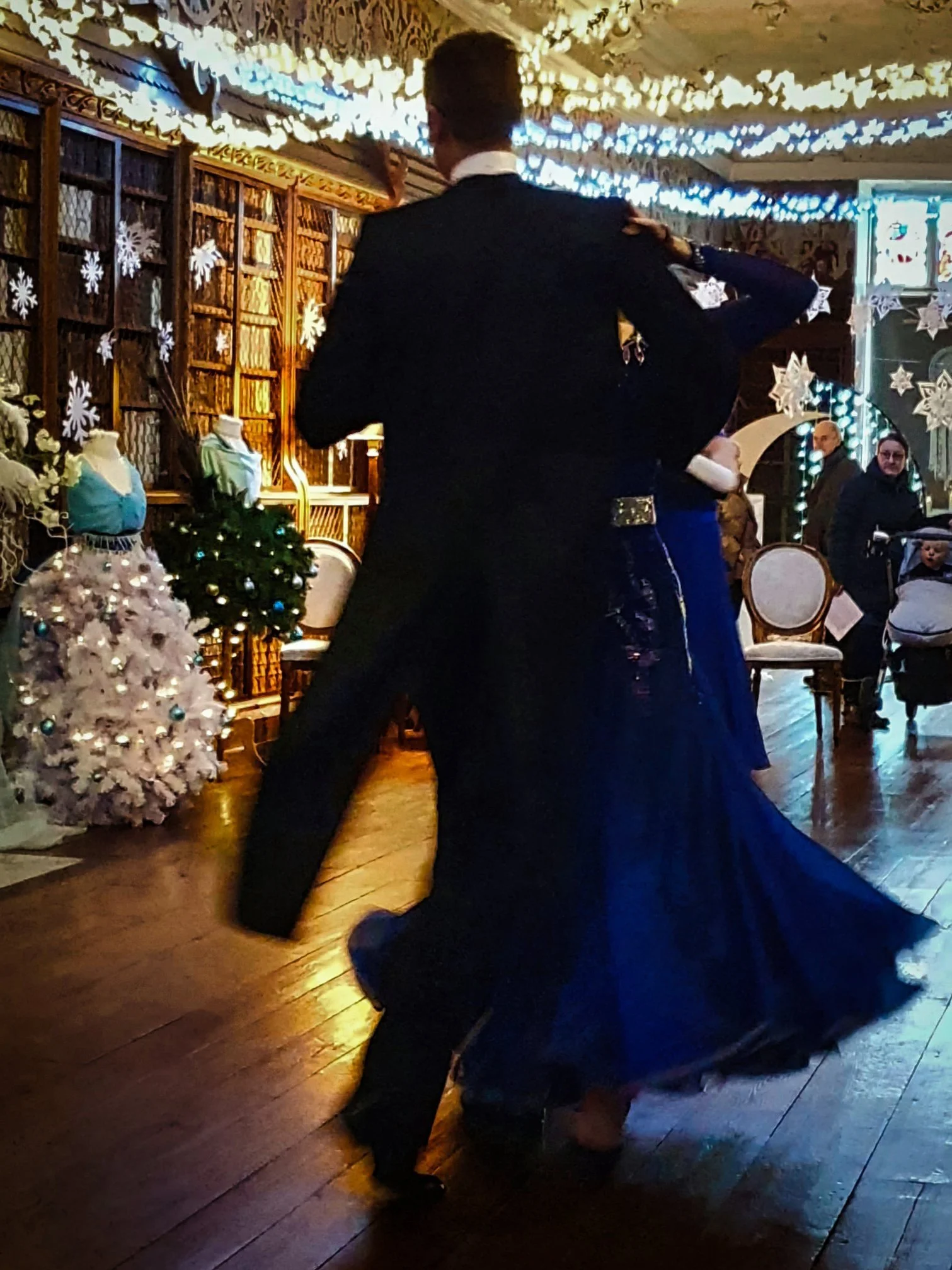What is Ballroom and Latin Dancing?
Ballroom and Latin is the name for a group of eleven dances (usually thought of as ten - we will get to why that is further in this article). This article is intended to give a general understanding of what ballroom and latin dancing is. It is intended to be informative and accessible rather than a definitive academic resource.
Ballroom and Latin dancing is made up of the following dances:
BALLROOM:
Waltz
Quickstep
Tango
Slow Foxtrot
Viennese Waltz
Slow and Quick Rhythm (usually known as Social Foxtrot)
LATIN:
Cha Cha
Rumba
Jive
Samba
Passo Doble
Whilst there are many differences between the ballroom and latin dances, they are almost always grouped together, so a group class would cover both the ballroom and the latin dances. It may seem that this gives the new dancer far too many dances to learn, but all of these styles use the same principles and in some cases the same figures, meaning that learning one go the ballroom or latin dances helps to learn all the others.
NOT INCLUDED
It should be noted that latin dancing does not include Salsa, Bachata or Argentine Tango. This may seem strange as these dances are technically “latin” in origin, however they are entirely separate disciplines, in many cases with their own examination boards.
Brief history and context
Ballroom was first codified in the 1920’s with the Imperial Society of Teacher of Dance (ISTD) modern ballroom faculty being formed in 1924. The dances are continuously developing. It has two main parts, ballroom and latin. Whilst there are many competitions and exams, ballroom and latin is a popular social dance style.
All ballroom and latin dances are partner dances requiring “lead and follow”, meaning that they can be danced socially without needing a set “routine”. This is a guiding principle of our school Dance Devotion. We have a separate article scheduled extolling the virtues of lead and follow, but is should be remembered that both partners are “active”, and that following is not a passive or lesser role.
An overview of each of the ballroom dances
VIENNESE WALTZ
This is the oldest of the ballroom dances. It is danced to music written in 3/4 rhythm. This basically means that there are three beats to every bar (1,2,3 | 1,2,3 | 1,2,3). The speed of the music can vary from 50 to 60 bars per minute - which is quite fast.
This dance has very few figures to learn, but is one of the more difficult of the ballroom dances, and as such is not dances as widely as the others. As an example, at Dance Devotion social dance we will play about two Viennese Waltzes per night, compared to roughly ten Waltes or Cha Cha’s.
WALTZ
More accurately referred to as the Slow Waltz or English Waltz, this is by far the most popular of all the ballroom dances, and the one most non-dancers would picture if you asked them to imagine what ballroom dancing looked and sounded like. As with the Viennese Waltz, the Waltz is danced to music written in 3/4 rhythm. This basically means that there are three beats to every bar (1,2,3 | 1,2,3 | 1,2,3). The speed of the music can vary from 28 - 31 bars per minute, but is typically played at around 30 bars per minute, which is a slow tempo.
Whilst many people think the Waltz is an easy dance, it is neither the easiest or most difficult of the ballroom dances to lean. Here at Dance Devotion we teach our students the Social Foxtrot and Quickstep before coming on to the Waltz. Once the dancer has gotten to grips with the weight in this dance, it becomes comparatively easy and very enjoyable to dance.
SLOW FOXTROT
This is probably the hardest of the ballroom dances to get to grips with, and the one we come to last in our classes. It his, however in our opinion the very best of the ballroom dances, and after the Waltz, the most popular. It is danced in 4/4 time, which simply means there are four beats to every bar (1,2,3,4 | 1,2,3,4 | 1,2,3,4). The speed of the music can vary from 28- 32 bars per minute. This may sound like a slow speed (hence the name Slow Foxtrot), but the linear nature of this dance, as opposed to the generally circular nature of the Waltz means that this dance travels around the dance floor quickly.
QUICKSTEP
Despite being known for its speed, this is actually the second easiest of the ballroom dances to lean (the easiest being the Social Foxtrot). It is danced in 4/4 time, which simply means there are four beats to every bar (1,2,3,4 | 1,2,3,4 | 1,2,3,4). The speed of the music us usually 50 bars per minute. Whilst this sounds fast compared to the 30 bars per minute of Waltz and Slow Foxtrot, a large proportion of the steps are danced as “slows”, which take two beats of music per step, effectively halving the speed of the dance.
BALLROOM TANGO
It should be noted that ballroom Tango is part of the ballroom and latin “set”, but Argentine Tango is its own separate and distinct discipline. This differences between these often misunderstood dance styles will be covered in a separate article.
This dance is the odd one out in the ballroom dances. It is the only ballroom dance where the feet are picked up when stepping instead of gliding them gracefully across the floor, it also does not have the swing and sway that are a prominent feature of all the other ballroom dances (more on swing and sway in a separate article). It is danced to music in 2/4 time. As this is an article on dances not music theory, we won’t go into the differences between 2/4 and 4/4 time, but let’s just say that we might count this 1,2 | 1,2.
SOCIAL FOXTROT
More accurately called Slow Rhythm and Quick Rhythm, this dance style is often overlooked, but it is the most useful of all the ballroom dances in a social context as it is both flexible and can be danced to a wide range of rhythms and tempos. Although it is the easiest of the ballroom dances to start, it can be developed in an advanced way into something wonderful. At Dance Devotion, we are big advocates of the Social Foxtrot.
The Social Foxtrot can be danced to music from roughly 28 - 55 bars per minute - this is an enormous range, and we typically prefer a tempo of about 44 bars per minute. It will work to any rhythm apart from 3/4, but is most often danced to 4/4 rhythm (the same rhythm as the Slow Foxtrot and Quickstep).
(AMERICAN SMOOTH)
This isn’t really a dance style, it is a relaxation of the normal rules of ballroom dance. You can dance any of the ballroom dances as an American Smooth, although it is most often found in Slow Foxtrot or Waltz. American Smooth rules allow for different holds such as open and shadow, and the inclusion of movements that might be more akin to the latin dances. For the more adventurous, this can include lifts, although this is not generally applied in a social context.
An overview of each of the latin dances
CHA CHA CHA
The Cha Cha Cha is a non-progressive dance (it does not travel around the room), and is the most popular latin dance. This is partially because it is the easiest latin dance to get started in, and partially because is has a fun lively feel. It is danced to music in 4/4 time at a pace of 30 bars per minute.
RUMBA
The Rumba is is a non-progressive dance (it does not travel around the room), and is closely related to the Cha Cha Cha, sharing many of the same figures. Despite this similarity, it has a completely different look and feel. It is danced to music in 4/4 time at a pace of 23-25 bars per minute.
There is a misconception that the Rumba is a soft, slow and somewhat mushy dance, but whilst the music itself is slow, the dance should actually be crisp, strong and toned, with a mix of fast and slow movements.
JIVE
As with the Cha Cha and Rumba, the Jive is a non-progressive dance (it does not travel around the room). It is danced to music in 4/4 time at a pace of 38-44 bars per minute. Whilst competitive demonstrations of this dance show a high proportion of kicks and flicks, this dance is based around a chassé action, and most of the figures used in social dancing are much more approachable than demonstrations would have you believe.
SAMBA
The Samba is one of only two latin dances that is progressive (rotates around the room). It is danced at a speed of 48 - 52 bars per minute, which makes it quite a fast dance.. It is probably the hardest of the latin dances. It is characterised by a rhythmic bounce action.
PASSO DOBLE
The Passo Doble is one of only two latin dances that is progressive (rotates around the room). The Passo Doble is the odd one out in the latin set, and is the latin dance which is closest to ballroom. It is modelled on the moves of the matador in the Spanish bullfight and is highly stylised. This dance style is not seen much on the social floor, with perhaps one being played per night.
Summary
Ballroom and Latin dancing is varied and suitable for all ages. Because it is comprised of eleven dances it means the ballroom dancer can dance to the vast majority of rhythms/ songs they might come across. It generally needs more room than many other styles of dance, so is not well suited to dancing in your kitchen, but you can find ample events to dance this style at dedicated Ballroom and Latin dances all over the world, including social dances hosted by Dance Devotion.
Ballroom and latin dancing is one of the most popular dance styles for social adults, with ballroom dance schools in most areas of the county. It has a well-defined social scene and is an excellent activity both for general fitness and social interaction.
If you are in the Norfolk or Norwich area, why not consider our group ballroom classes or private ballroom lessons?

